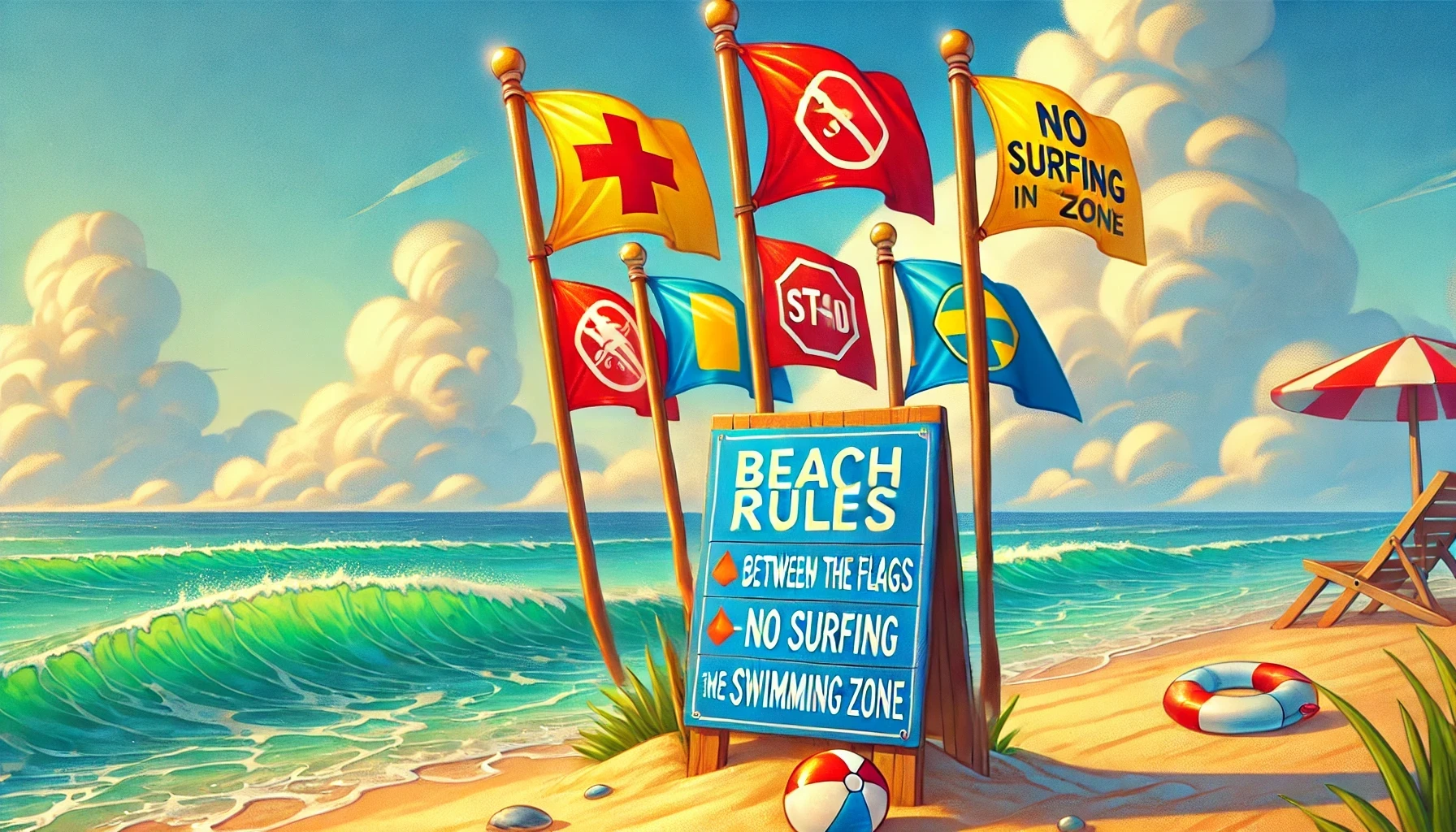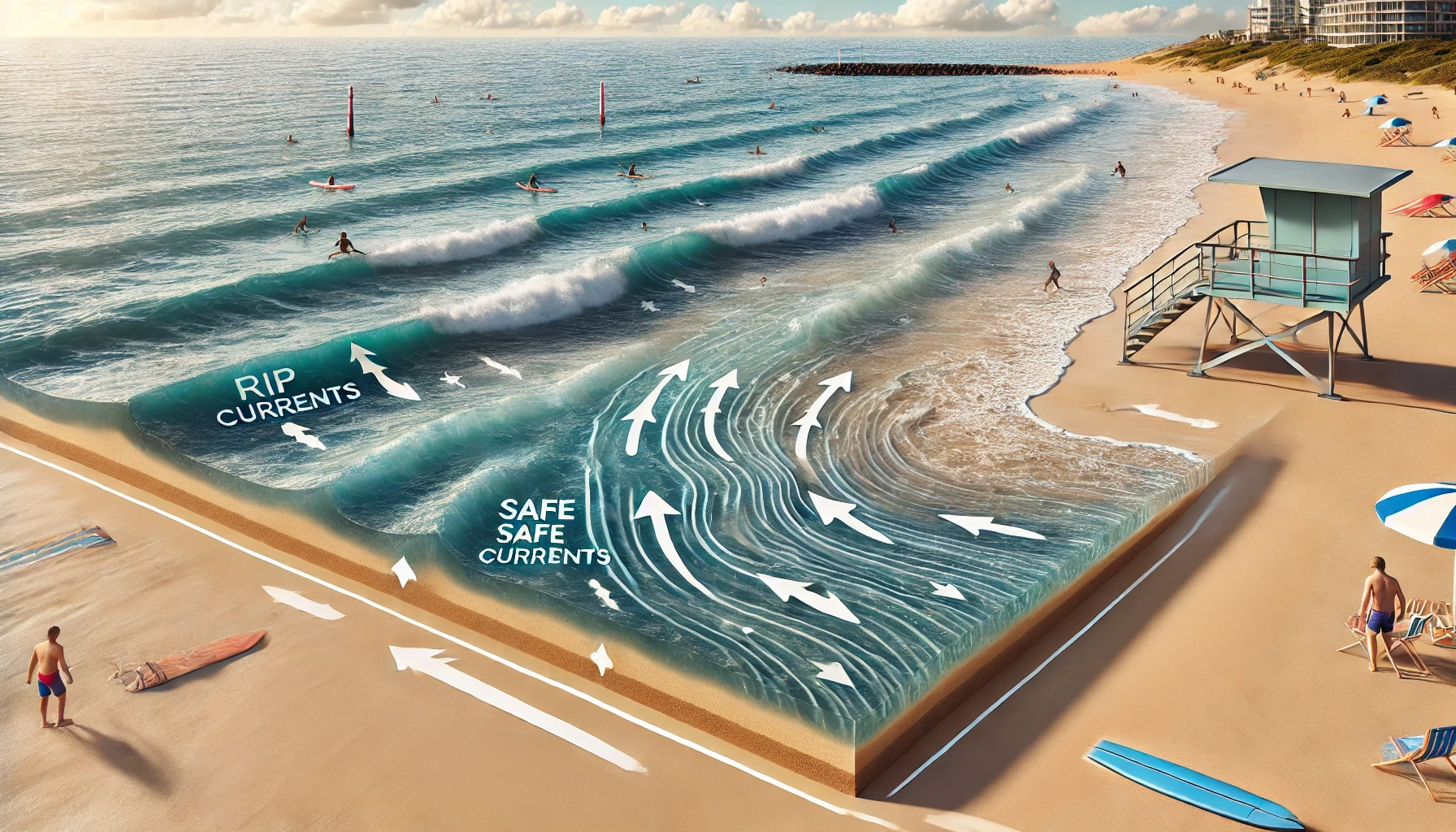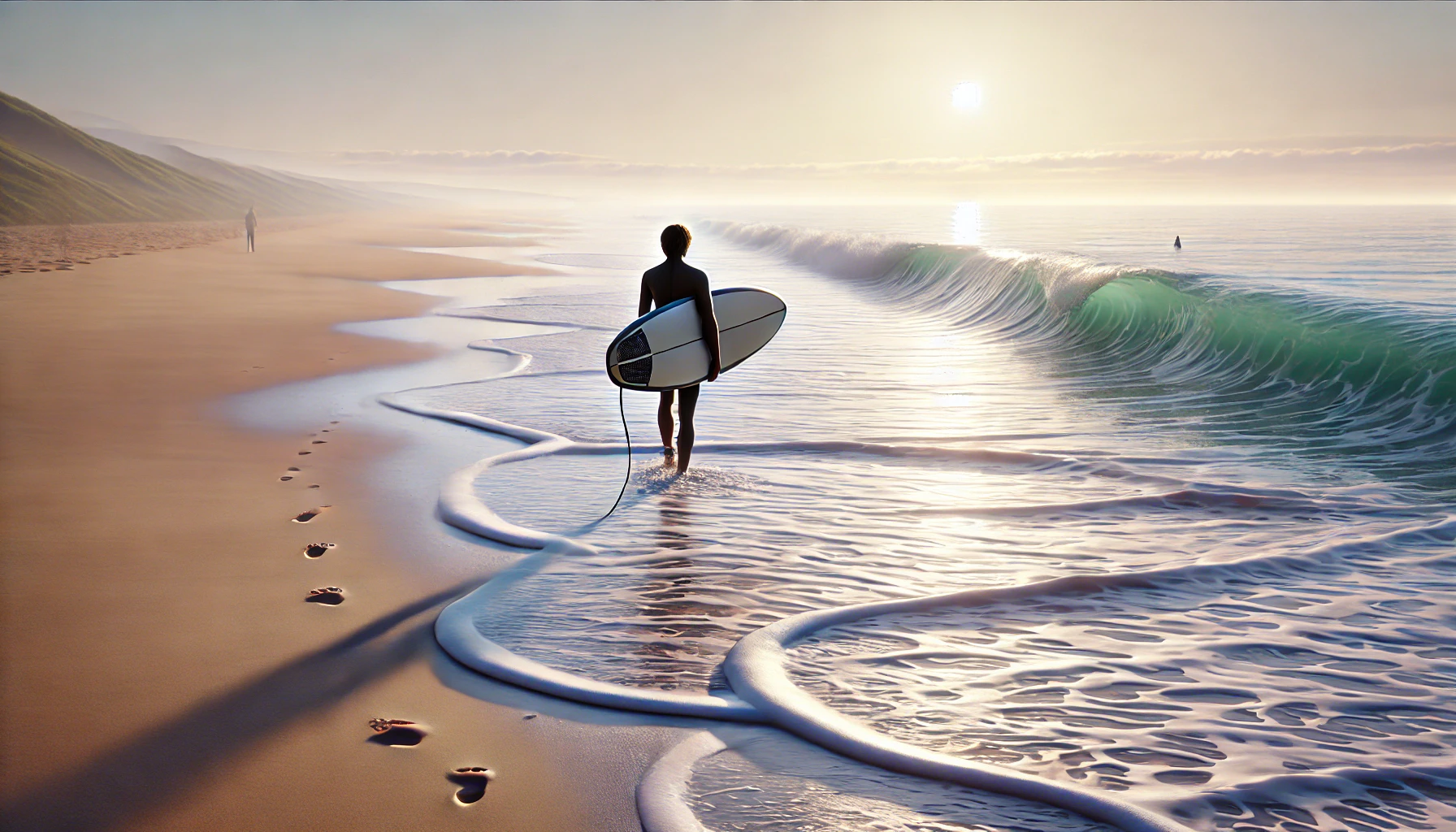Water Safety Tips: Essential Safety Rules for Beginner Surfers 🌊
As a beginner surfer, feeling safe and confident in the water is crucial. This guide covers the main safety rules for surfing, helping you understand how to protect yourself and manage possible risks in the ocean. From recognizing strong currents to knowing when to exit the water, these tips will provide you with a solid foundation for safe surfing.

1. Basic Surfing Safety Rules 🏄♀️
Following a few key safety principles will make your surfing experience both enjoyable and secure:
- Never Surf Alone: Surfing with a buddy or instructor is one of the most important rules, especially for beginners. Having someone nearby can be essential if you need help.
- Respect Local Rules and Warnings: Each beach has its own set of rules and flag systems for safety. Pay attention to warning flags and surf advisories before entering the water.
- Stay Within Your Skill Level: Don’t attempt to surf waves that are beyond your experience. Bigger waves may be exciting, but they are also more challenging and dangerous for beginners.
Tip: Ask a lifeguard or a local surfer about specific rules and potential hazards on the beach. Locals can give you useful advice that may not be immediately visible.

2. How to Recognize and Avoid Strong Currents 🌊
Rip currents can be dangerous for surfers, especially those who are new to the sport. Here’s how to identify them and what to do if you get caught in one:
- Look for Signs of Rip Currents: Rip currents are often found near jetties, piers, or areas with uneven water patterns. They may appear as channels of choppy, discolored water flowing out to sea.
- What to Do If Caught in a Rip Current: Don’t try to swim against it. Instead, stay calm and swim parallel to the shore until you’re out of the current. Once you’re free, swim back to shore at an angle.
- Avoid Known Rip Current Areas: If you’re unsure about where rip currents may be, ask a lifeguard or experienced surfer for guidance before heading out.
Tip: Always surf at a beach with a lifeguard on duty if possible, especially as a beginner.

3. Proper Etiquette Around Other Surfers 🏄♂️
Being considerate of others in the water is essential for safety and enjoyment:
- Observe the Right of Way: In surfing, the surfer closest to the peak of the wave (the highest point) has the right of way. Respect this rule to avoid collisions.
- Maintain Distance: Keep a safe distance between you and other surfers. This reduces the chances of accidentally hitting someone with your board.
- Communicate: Use hand signals or a quick verbal signal if you’re paddling for a wave that another surfer might also be eyeing. Clear communication helps prevent misunderstandings in crowded spots.
Tip: Remember, surfing is about enjoying the ocean together. Friendly gestures go a long way in creating a positive atmosphere.

4. Knowing When to Leave the Water 🕒
Knowing when to exit the water is just as important as knowing how to enter it:
- Watch for Weather Changes: If you notice sudden changes in wind, waves, or approaching storms, it’s time to head to shore.
- Physical Fatigue: Surfing is physically demanding, especially for beginners. If you’re feeling tired, it’s safer to call it a day rather than pushing your limits.
- Stay Aware of Your Surroundings: Be mindful of shifting currents, wildlife, or objects in the water, and exit if conditions feel unsafe.
Maintenance Tip: Resting between sessions and staying hydrated can prevent fatigue, helping you stay alert and responsive.

Summary
Surfing is an incredible experience, but safety should always come first. By following these key safety guidelines, staying aware of rip currents, respecting others in the water, and knowing when to exit, you’ll be able to enjoy your surfing sessions with confidence. Ride safe and enjoy the waves!
Ready to take the next step? Stay safe, and happy surfing! 🏄♀️






